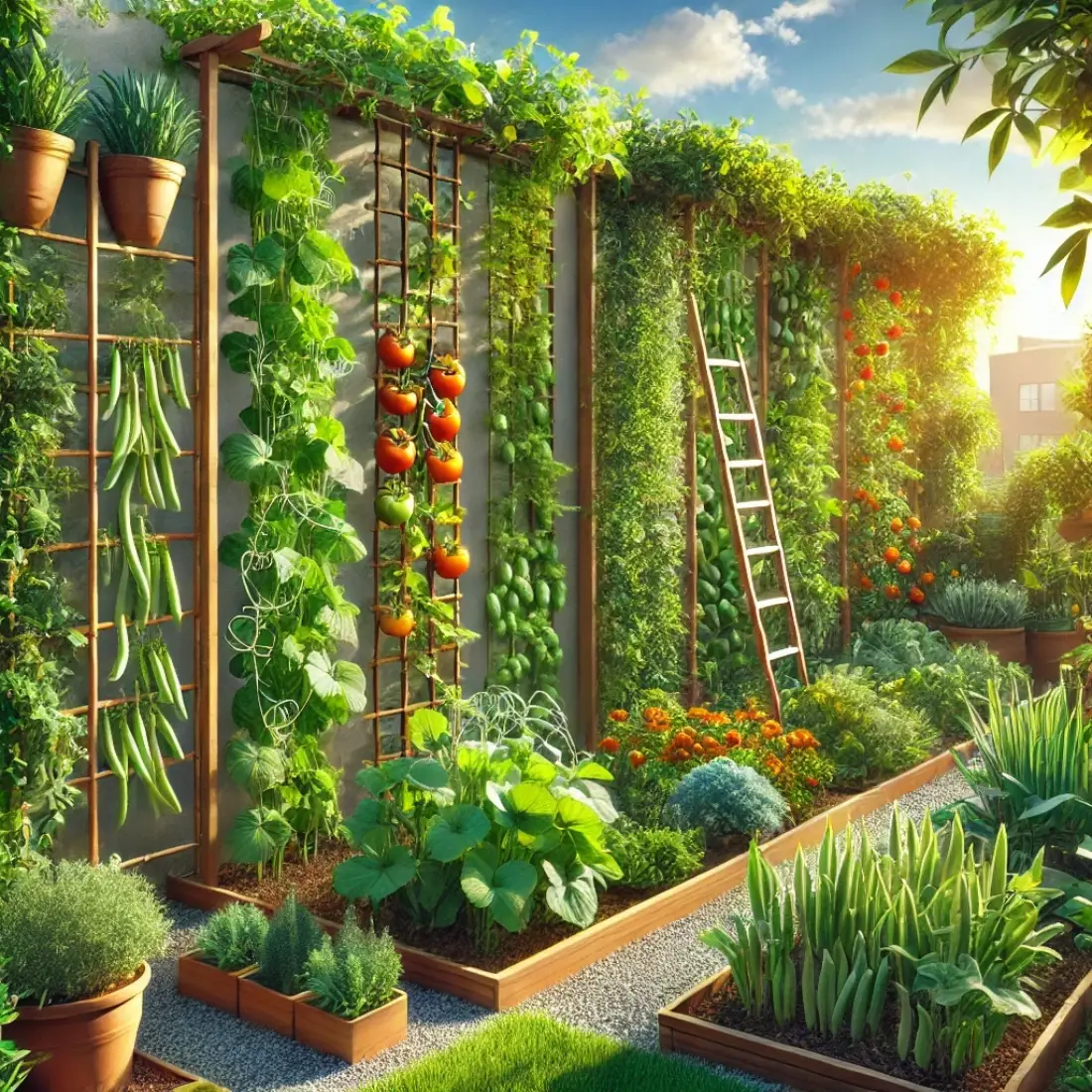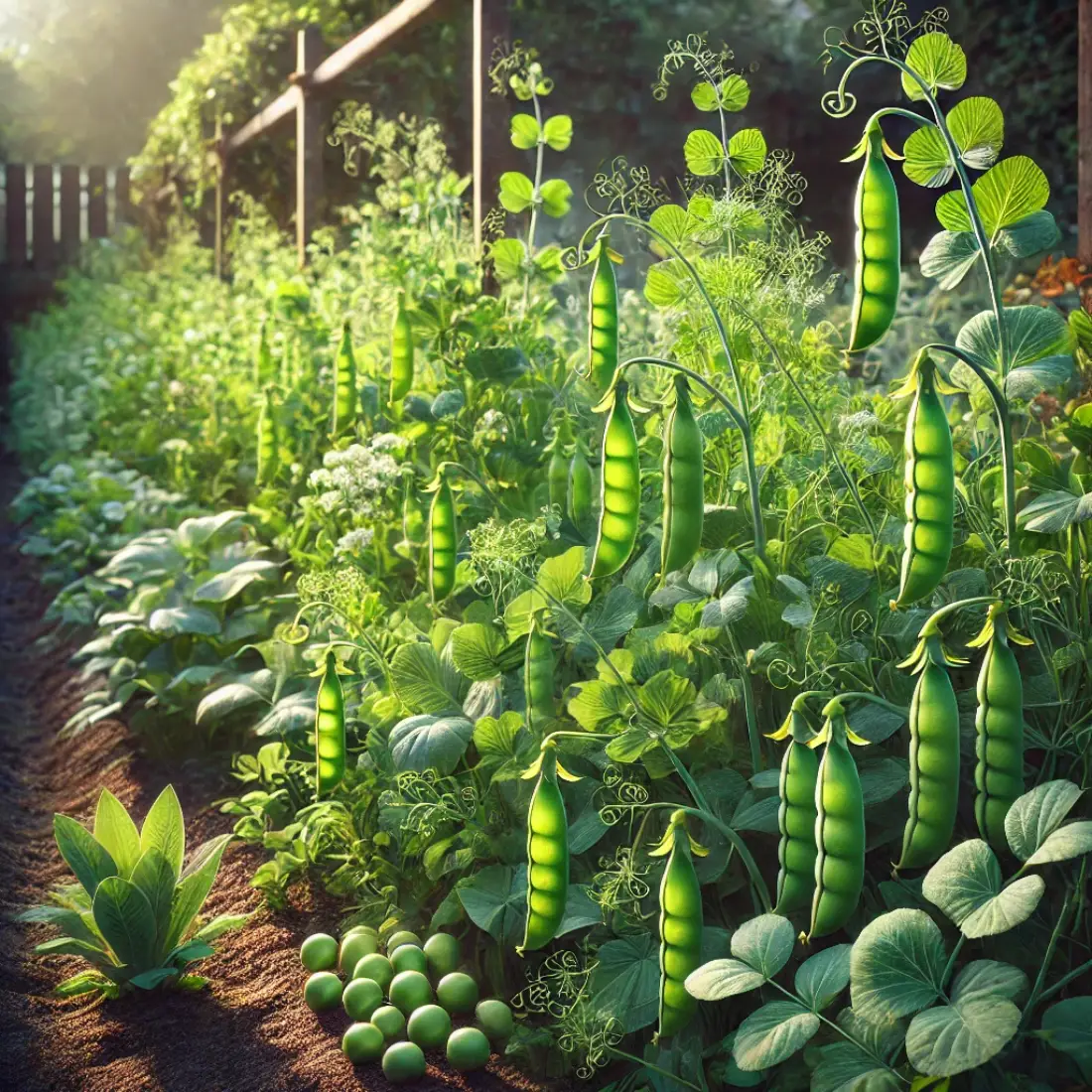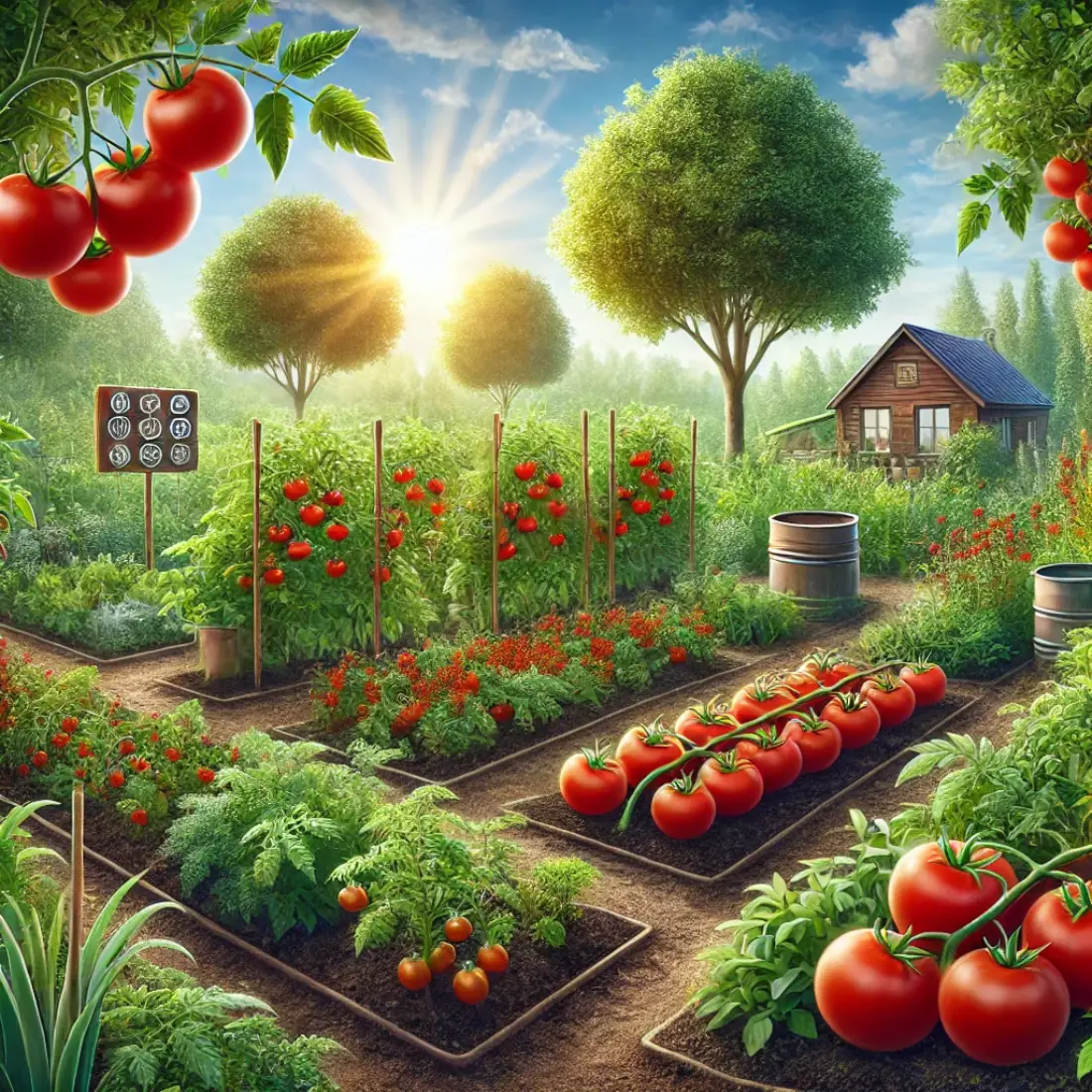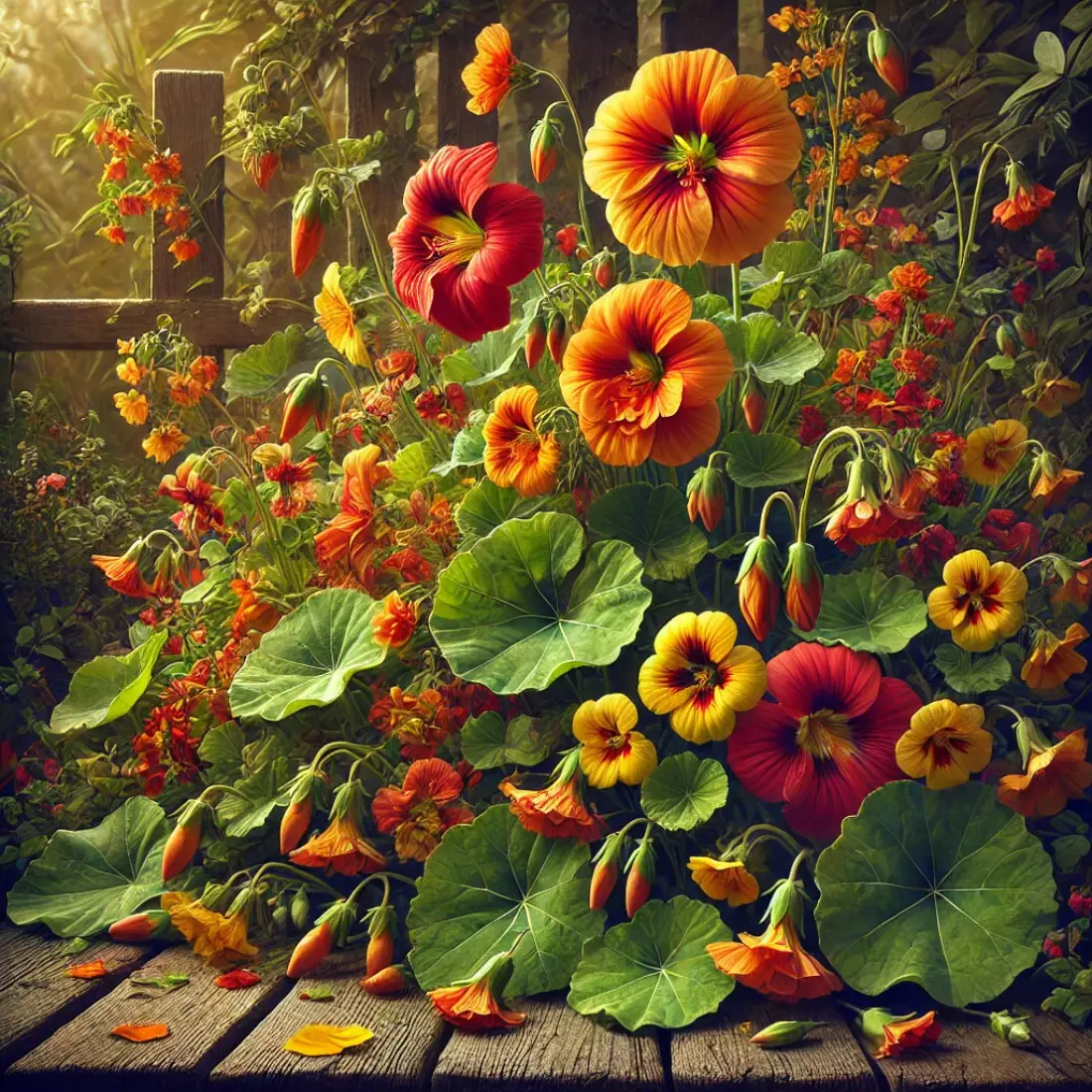Edible climbing plants are a fantastic addition to any garden, offering both aesthetic appeal and practical benefits. These plants grow vertically, making efficient use of space and adding visual interest with their lush foliage and vibrant fruits or vegetables. They are ideal for small gardens, urban spaces, and even balconies, where ground space is limited but vertical space is abundant.
Growing edible climbers not only enhances your garden’s beauty but also provides a steady supply of fresh produce. From beans and peas to tomatoes and cucumbers, these plants can turn a bare wall or trellis into a productive and attractive feature.
Beans
Pole Beans: These are ideal for vertical gardening, producing a continuous harvest over the the growing season. Popular varieties include ‘Kentucky Wonder’ and ‘Blue Lake’.
Soil and Sunlight: Beans thrive in well-drained soil with full sun exposure. They prefer a soil pH between 6.0 and 7.5.
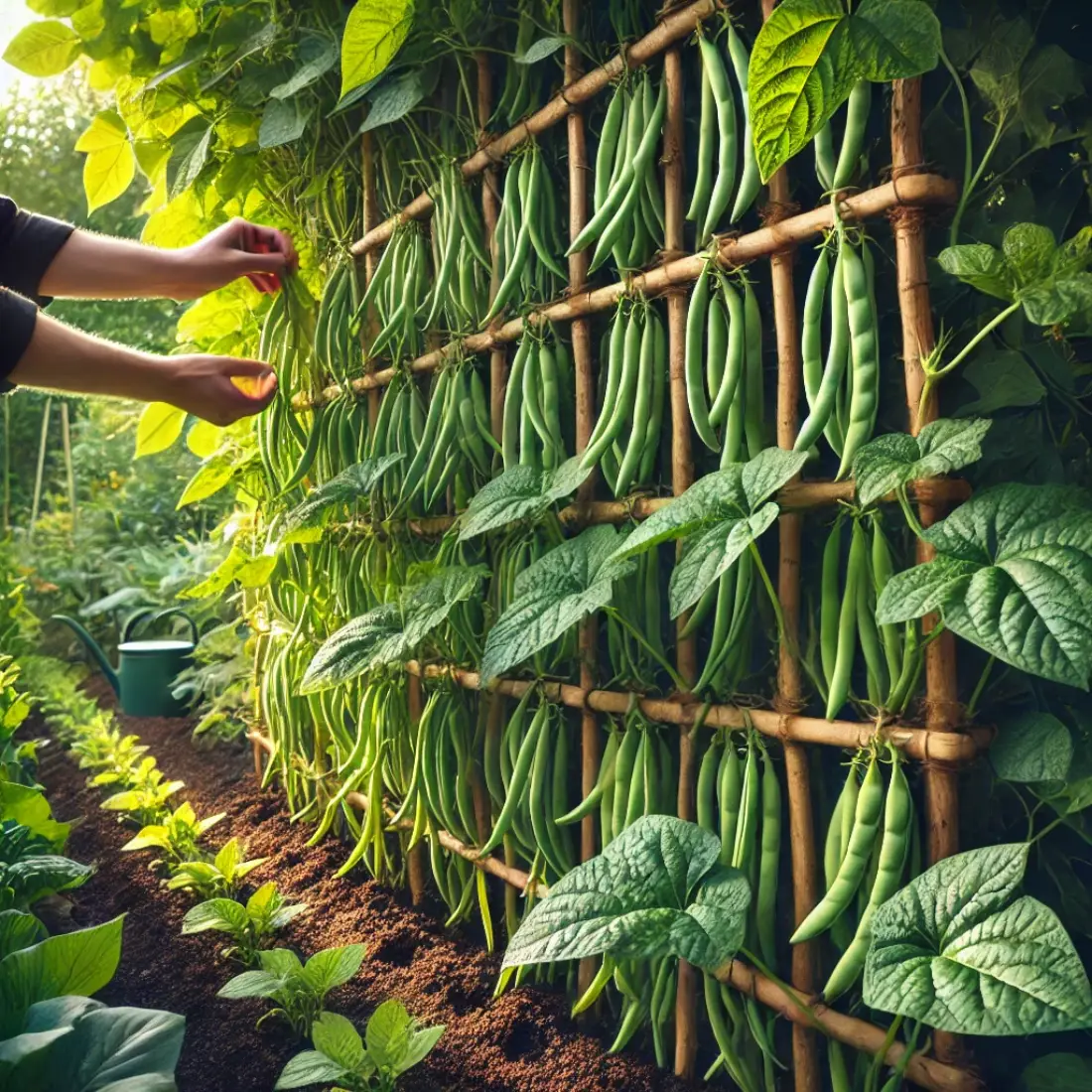
Spacing and Support: Plant beans 4-6 inches apart and provide a trellis or stakes for support as they climb.
Harvesting: Pick beans when they are firm and crisp. Use them fresh in salads, stir-fries, or steamed as a side dish.
Peas
Snap Peas: Sweet and crunchy, snap peas can be eaten whole. Snow Peas: Flat and tender, perfect for stir-fries. Shelling Peas: Grown for their seeds, which must be shelled.
Soil and Sunlight: Peas prefer well-drained soil and full to partial sunlight. Ideal soil pH is 6.0 to 7.0.
Spacing and Support: Plant peas 2 inches apart and use a trellis or netting for support.
Harvesting: Pick peas when pods are full and green. Enjoy fresh, or use in soups, salads, and stir-fries.
Cucumbers
Slicing Cucumbers: Ideal for fresh eating, salads, and sandwiches. Pickling Cucumbers: Best for making pickles due to their smaller size and thicker skins.
Soil and Sunlight: Cucumbers thrive in well-drained soil with full sun exposure. The optimal soil pH is 6.0 to 7.0.
Spacing and Support: Plant cucumbers 12 inches apart. Provide a trellis or vertical support to keep vines off the ground.
Harvesting: Pick cucumbers when they are firm and reach the desired size. Use fresh in salads, sandwiches, or for pickling.
Tomatoes
Indeterminate Varieties: These grow continuously and produce fruit throughout the season. Popular choices include ‘Cherry’, ‘Beefsteak’, and ‘Roma’.
Soil and Sunlight: Tomatoes prefer well-drained, fertile soil with full sun exposure. Optimal soil pH is between 6.0 and 6.8.
Spacing and Support: Plant tomatoes 18-24 inches apart. Use cages, stakes, or trellises to support the climbing vines.
Harvesting: Pick tomatoes when they are fully colored and firm. Use them fresh in salads, sauces, or cooked dishes.
Squash and Pumpkins
Summer Squash: Includes zucchini and yellow squash, best harvested young. Winter Squash and Pumpkins: Includes butternut, acorn, and pumpkins, which mature in late fall.
Soil and Sunlight: Prefers well-drained, fertile soil with full sun. Optimal soil pH is 6.0 to 6.8.
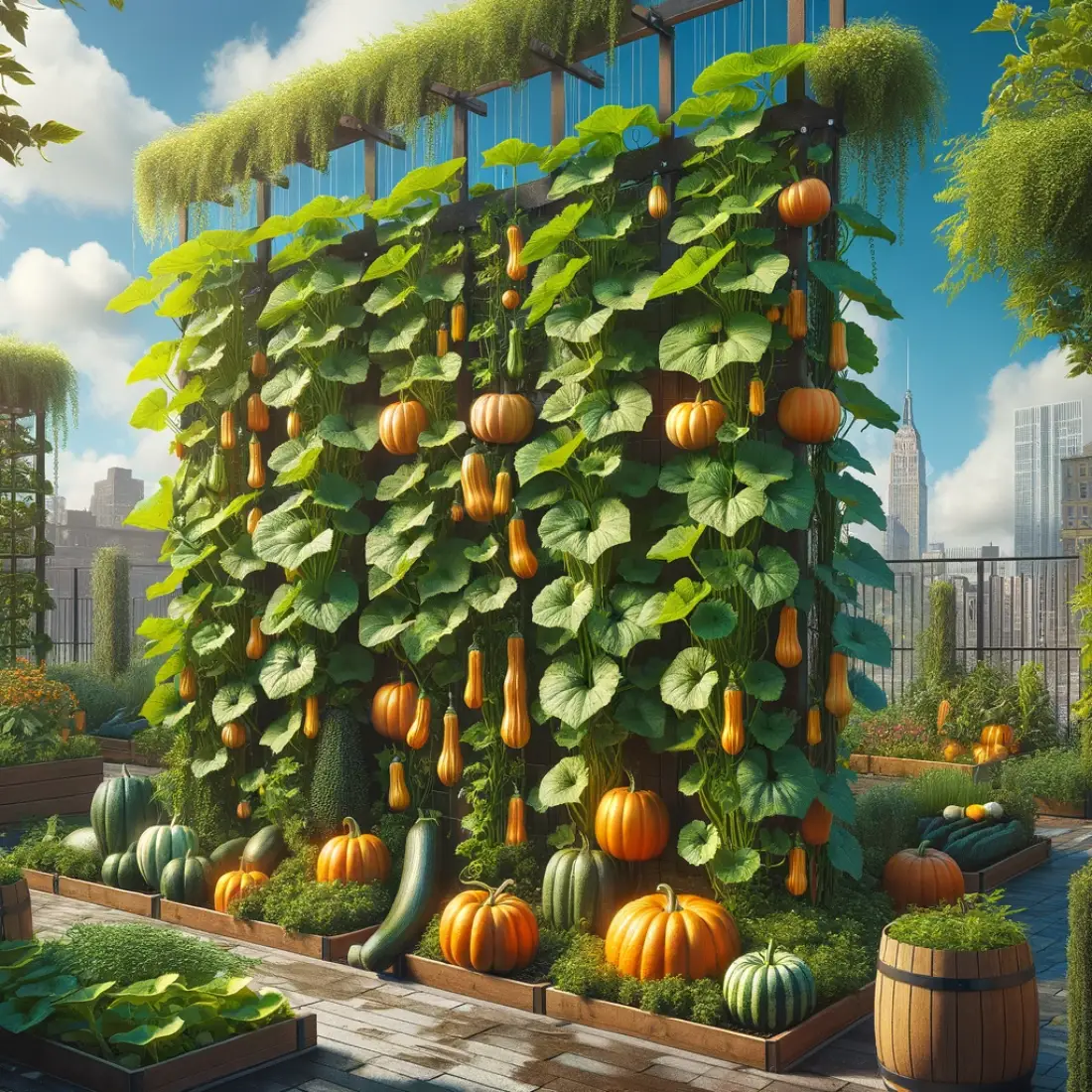
Spacing and Support: Plant 24-36 inches apart. Use sturdy trellises or arbors to support the heavy fruits as they grow.
Harvesting: Pick summer squash when tender and small. Harvest winter squash and pumpkins when they are fully mature and their skin is hard. Use in soups, roasts, and pies.
Grapes
Table Grapes: Ideal for fresh eating, including varieties like ‘Concord’ and ‘Thompson Seedless’. Wine Grapes: Best for making wine, such as ‘Chardonnay’ and ‘Cabernet Sauvignon’.
Soil and Sunlight: Grapes thrive in well-drained soil with full sun. The ideal soil pH is 5.5 to 6.5.
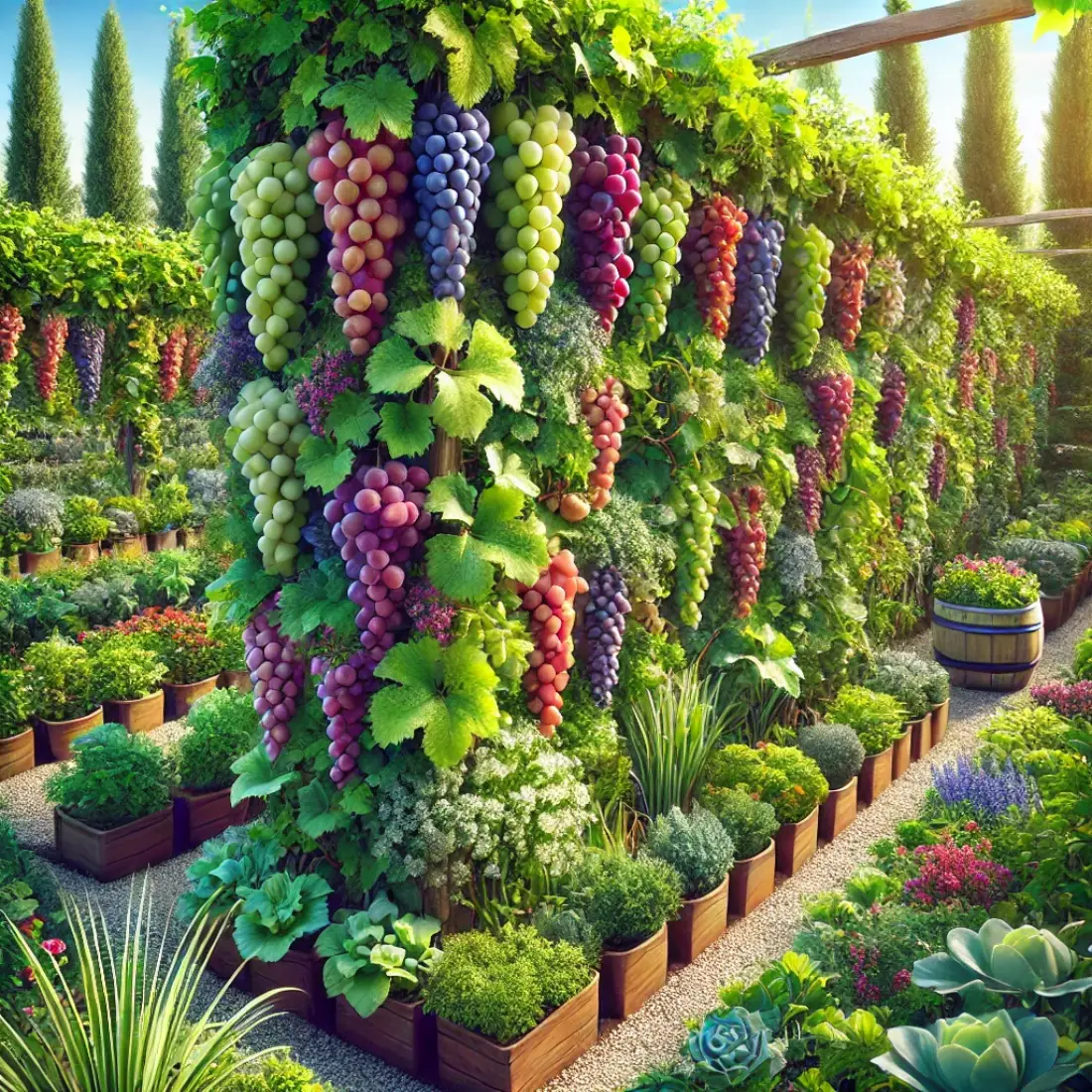
Spacing and Support: Plant grapes 6-10 feet apart. Use trellises or arbors to support the vigorous vines.
Harvesting: Pick grapes when they are fully colored and sweet. Enjoy fresh, or use for making wine, juice, and jams.
Passionfruit
Common Types: Purple passionfruit and yellow passionfruit, both known for their sweet-tart flavor.
Soil and Sunlight: Passionfruit thrives in well-drained, fertile soil with full sun. The optimal soil pH is 6.0 to 7.5.

Spacing and Support: Plant passionfruit vines 6-10 feet apart. Use strong trellises or fences to support the vigorous climbing vines.
Harvesting: Pick passionfruit when the skin is slightly wrinkled and the fruit is heavy. Use fresh in desserts, drinks, or as a topping for salads and yogurt.
Kiwi
Hardy Kiwi: Smaller, smooth-skinned, and cold-tolerant. Fuzzy Kiwi: Larger, fuzzy-skinned, and typically grown in warmer climates.
Soil and Sunlight: Kiwis prefer well-drained, fertile soil with full sun to partial shade. The optimal soil pH is 5.5 to 7.0.
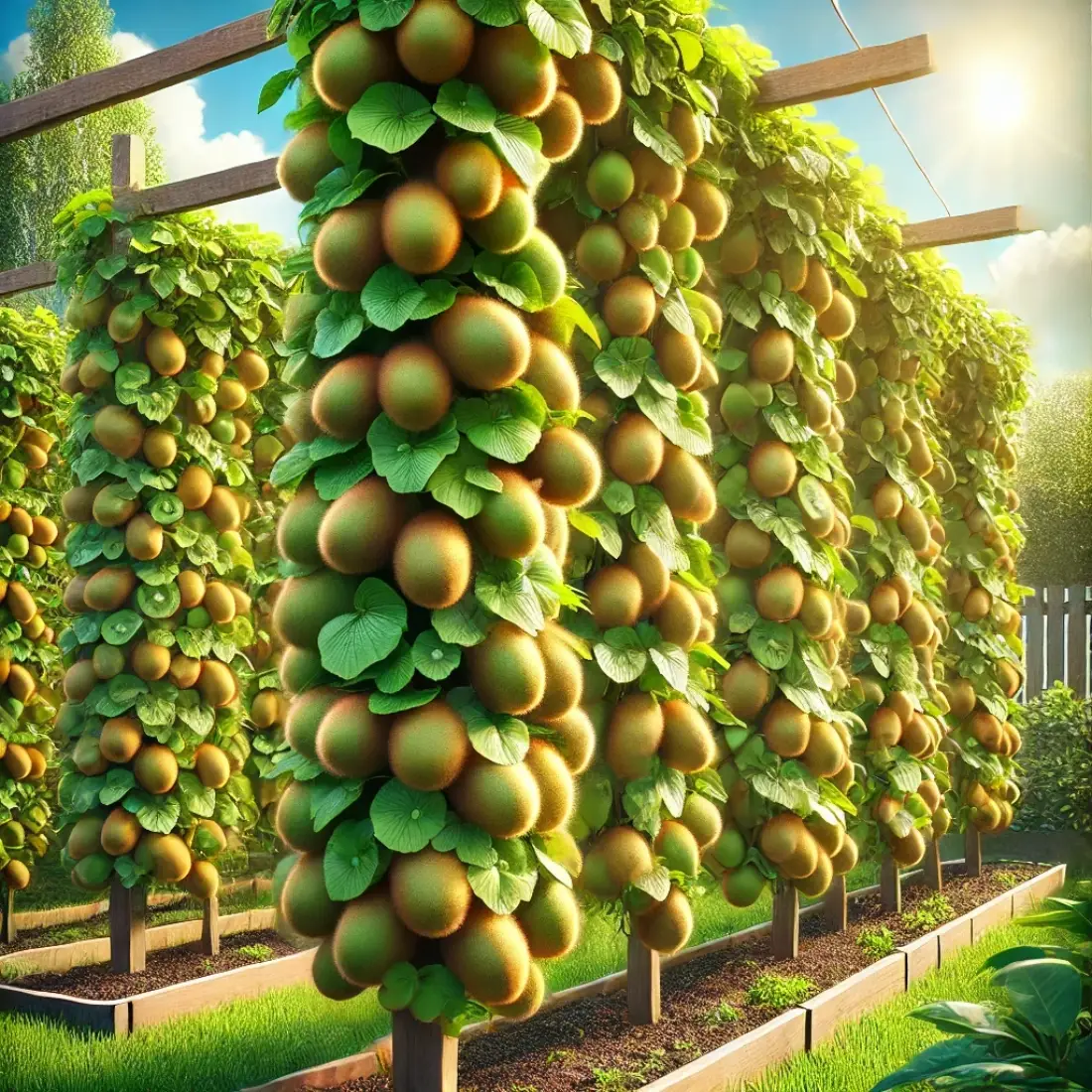
Spacing and Support: Plant kiwi vines 10-15 feet apart. Use sturdy trellises or arbors to support the vigorous vines.
Harvesting: Pick kiwis when they are firm and slightly soft to the touch. Use fresh in fruit salads, smoothies, or as a topping for desserts.
Nasturtiums
Flowers, Leaves, and Seeds: All parts are edible, with a peppery flavor that adds zest to salads and garnishes.
Soil and Sunlight: Nasturtiums thrive in well-drained soil with full sun to partial shade. They are adaptable to poor soils.
Spacing and Support: Plant nasturtiums 12 inches apart. Provide trellises or fences for support as they climb.
Harvesting: Pick flowers, leaves, and seeds as needed. Use fresh in salads, as garnishes, or in herbal teas. Seeds can be pickled as a substitute for capers.
FAQs About Edible Climbing Plants
What are the best edible climbing plants for small gardens?
The best edible climbing plants for small gardens include beans, peas, cucumbers, tomatoes, and nasturtiums. These plants can grow vertically, saving space while providing a fresh supply of produce.
How do I support climbing plants in my garden?
You can support climbing plants using trellises, stakes, arbors, or fences. These structures help keep the plants upright, improve air circulation, and make harvesting easier.
Can edible climbing plants grow in containers?
Yes, many edible climbing plants can grow in containers. Ensure the containers are large enough for the plant’s root system and provide proper support for the climbing vines.
How often should I water climbing plants?
Water climbing plants regularly, keeping the soil consistently moist but not waterlogged. The frequency depends on the plant type, weather conditions, and soil drainage.
What soil is best for edible climbing plants?
Most edible climbing plants prefer well-drained, fertile soil rich in organic matter. Soil pH requirements vary by plant, but generally, a pH between 6.0 and 7.0 is suitable for many climbers.
When is the best time to plant climbing vegetables and fruits?
The best time to plant climbing vegetables and fruits is in early spring after the last frost. This gives the plants a full growing season to establish and produce fruit.
How can I prevent pests and diseases in my climbing plants?
Maintain good air circulation, avoid overhead watering, and regularly inspect plants for signs of pests and diseases. Use organic pest control methods, such as neem oil, insecticidal soap, or beneficial insects.
Can I grow different types of climbing plants together?
Yes, you can grow different types of climbing plants together, but ensure they have compatible growing requirements and enough space to thrive. Companion planting can also help deter pests and improve growth.
How do I prune climbing plants?
Prune climbing plants regularly to remove dead or diseased foliage, encourage new growth, and improve air circulation. The specific pruning techniques depend on the plant type.
What are some companion plants for edible climbers?
Good companion plants for edible climbers include marigolds, basil, and nasturtiums. These can help deter pests, attract beneficial insects, and improve overall plant health.

